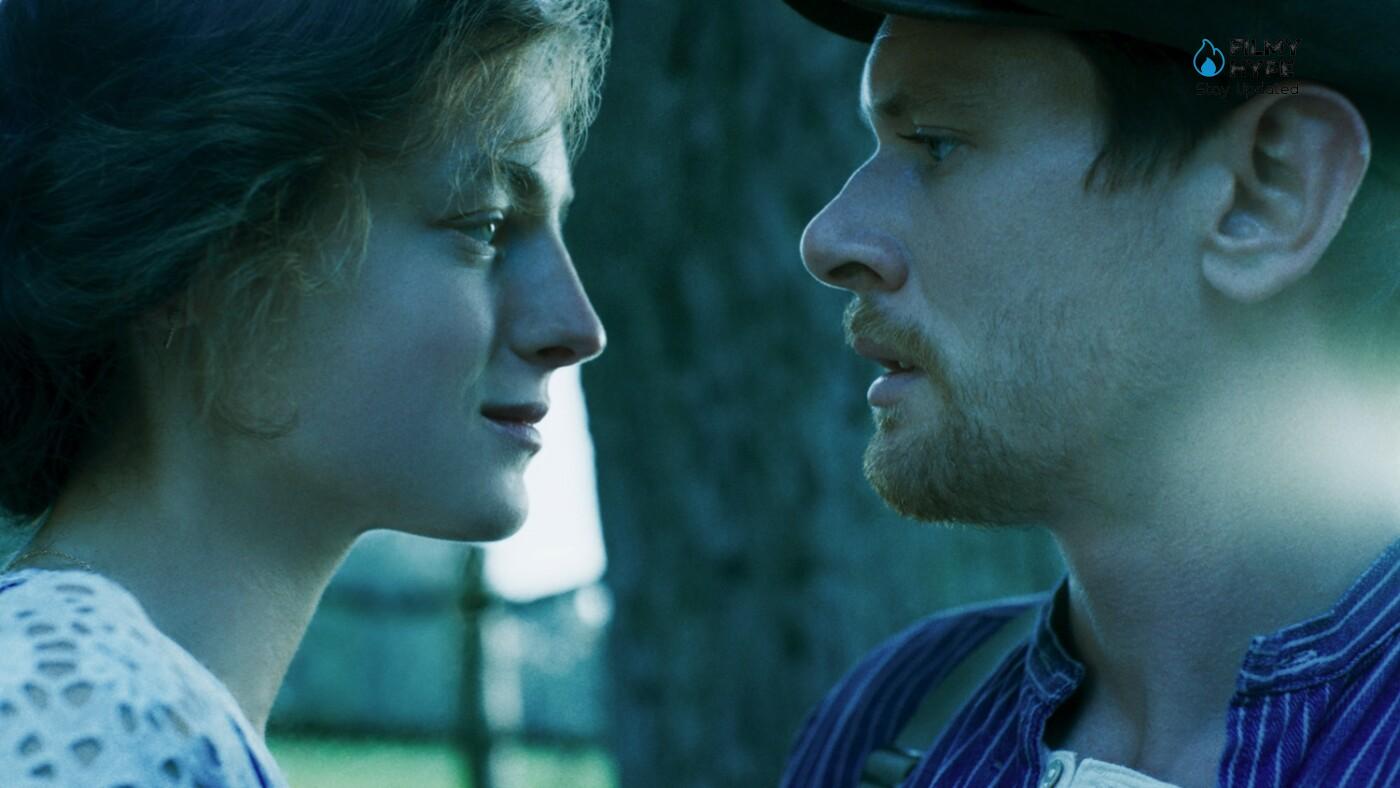Lady Chatterley’s Lover Review: Fusion Between Sensations And Rendering Of The Shots
Cast: Emma Corrin, Jack O’Connell, Matthew Duckett, Joely Richardson, Faye Marsay
Director: Laure de Clermont-Tonnerre
Streaming Platform: Netflix
Filmyhype.com Ratings: 3/5 (three stars) [yasr_overall_rating size=”large”]
The transgressiveness of a literary, artistic, or audiovisual work is always limited to a precise time frame; when the novel Lady Chatterley’s Lover was published in 1928, DH Lawrence was branded a pornographer and his book condemned as an “obscene” work. Nowadays, director Laure de Clermont-Tonnerre has decided to adapt Lawrence’s novel, making a film starring Emma Corrin and Jack O’Connell, which landed on Netflix. As we will see in our review of Lady Chatterley’s Lover, the latter transposition completely loses the artistic, passionate and transgressive spirit of Lawrence’s work, resulting paradoxically ancient compared to the ardor with which the author had told a story of love but also of erotic passion.

Lady Chatterley’s Lover Review: The Story
Constance Reid, known as Connie, married Clifford Chatterley, owner of the Wragby Hall estate and a baronet. After returning to the front, Clifford returns home confined to a wheelchair: thus, Lady Chatterley’s married life begins to become increasingly complicated, between a husband who needs constant care and the jovial and open attitude to Connie’s culture, which the young woman necessarily finds herself having to reduce. Connie is an intellectual, eager to live and see the world; Clifford, a family aristocrat, instead feels at home in the small kingdom owned by him.
In this hut, an island of “wilderness”, Oliver Mellors arrives as an employee, a former military man with intellectual tastes (he is a great reader of the classics), but with a surly character, who tries to escape from the outside world which is becoming more and more industrial. It is thanks to the indifference of Clifford, increasingly dedicated to business, that Connie discovers Mellors, and it will be possible for the couple to indulge in an entrancing but clandestine love story. A love that will be a carnal and at the same time contradictory refuge, just like the personality of Lawrence, pagan and Christian at the same time: a beautiful metaphor that allows the author’s philosophy of life to unfold in the novel, a spirit that is missing in this adaptation.
Lady Chatterley’s Lover Review and Analysis
Director Laure de Clermont-Tonnerre brings her vision to DH Lawrence’s classic erotic tale; we can imagine that the challenge of directing this story in 2022 was to adopt the lens of the traditionalist society of almost a century ago and its perception of love linked to marriage. Without a doubt, this is an intriguing starting point for analyzing the film. To try to involve the public with this contemporary adaptation, the French director relies on the chemistry of Emma Corrin and Jack O’Connell, two actors linked to television productions – a fundamental requirement given that the directorial and narrative direction of Lady Chatterley’s Lover seems to follow precisely those patterns.
While the film faithfully transposes the plot and themes of the source material, it struggles to capture its spirit, blunting Lawrence’s skeptical modernism and losing sight of his poetic vision. This wouldn’t matter at all if the film had its vision, but aside from a few sex scenes re-edited to align with the contemporary gaze, it barely distinguishes itself from most period dramas, opening it up to an unfavorable comparison to the novel. The vital spirit of the novel Lady Chatterley’s Lover had above all to do with the rediscovery of the self in a natural setting, the call of the wild, destroyed by civilization and urban oppression. However, the film struggles to find a visual equivalent to directly show what Lawrence describes in such vivid language:

There are many missed opportunities and this testifies to perhaps one of the best sequences of the whole film, which manages to dramatize the class conflict central to the plot of Lady Chatterley’s Lover: when Connie visits Tevershall for the first time and witnesses the villagers dancing for a May holiday, while a small contingent of miners marches down the street, protesting their working conditions. At this moment, one sees a looser approach to the adaptation that the film could have taken, as the scene is not present in the book and yet condenses its themes –pagan, naturalistic sexuality and working-class resistance – into a unique expressive image.
Certainly, in this adaptation, more space is left for the staging of Connie’s pleasure and her ability to act, even in the field of love. The development of sexual intimacy between Connie and Mellors unfolds over several encounters and does not shy away from showing the nudity of the characters. We are faced with an all too direct transposition of the passion between the protagonists, where Lawrence’s pen managed to maliciously capture the viewer simply by suggesting images and dynamics, paradoxically using an absolute descriptive capacity. Thus, Laure de Clermont-Tonnerre’s film, unfortunately, ends up being “only” a love story. One of those that pass on Netflix and leave, without ever truly reconnecting with the spirit of everlasting work.
Lady Chatterley’s Lover Review: The Last Words
The Netflix adaptation of DH Lawrence’s novel loses the vitality and Dionysian afflatus of its writer’s pen, presenting itself as a reworking of a plot that was much more modern in 1928 than the 2022 film. This fusion between sensations and rendering of the shots also returns with the other characters, marrying perfectly with a fairly simple and at times almost sparse staging, composed of sets that seem distant and at the same time very close, without the need to fill them too much with life. It is the gazes and the silences, as well as some long and total shots that describe the heart of certain developments that easily escape the written word.




